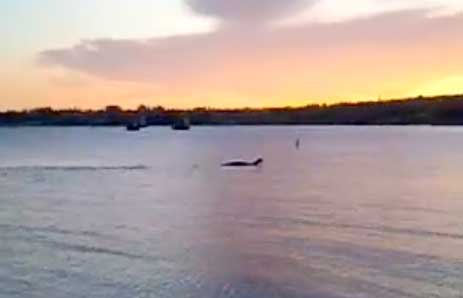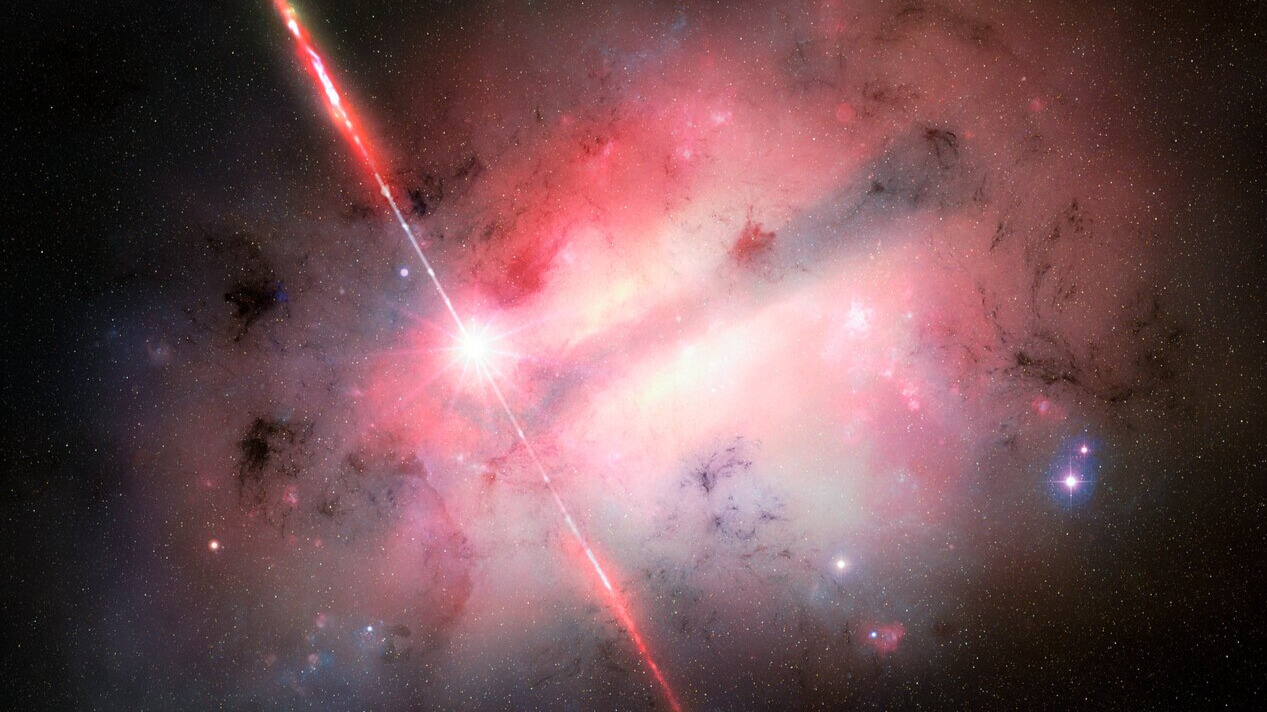America's Loch Ness Monster? Or a Swimming Deer?

New footage of Champ, the monster said to inhabit Vermont's Lake Champlain, was recently released. Allegedly taken about a week ago in the early morning hours, the two-minute cell phone video shows the silhouette of some object — probably an animal — moving toward the eastern shore. (Video is here.)
The video has created a buzz among monster enthusiasts, some proclaiming it's the best evidence for the creature since a 1977 photograph (more on that later). Internet posters have exchanged a flurry of theories ranging from Champ to a hoax to a swimming animal.
Video analysis
The video holds several clues about the creature's identity. The form resembles the back and head of a swimming deer, and moves toward the near shore past what appears to be a buoy, which might suggest shallow water.
When analyzing videos such as this, what we don't see is often just as important as what we do see. In this case the video abruptly ends as the animal nears shore.
It seems very odd that the last part of the sequence is missing. Surely if the cameraman was intrigued enough by the sight to spend two minutes recording it he didn't suddenly lose interest, stop recording, and turn away. The eyewitness was supposedly worried about running out of memory on his cell phone. That may be true, or perhaps he chose to edit out the last seconds of the sequence, when we could all see if it was indeed a deer climbing ashore. Though I doubt a hoax, there are many unanswered questions about the sighting.
It's also interesting to note that this footage is unlike other alleged Champ videos and photographs. Many show a round, dark form in the water, but none so closely resemble a large swimming mammal. It also seems odd that an aquatic creature would make such an obvious effort to keep its head above water. If Champ monsters exist, and must regularly surface to breathe (like dolphins or whales) it's amazing that they are not routinely sighted on the populated lake.
Get the world’s most fascinating discoveries delivered straight to your inbox.
Story continues below ...
{{ embed="20090605" }}
Lake monster mimics
I have analyzed and investigated many similar still and moving images before. Some photos of lake and river monsters are outright hoaxes, such as the "Borneo Monster" image released earlier this year.
Far more often, however, lake monster sightings are simply the result of mistakes and misidentifications. When people see something they think is odd or strange at a lake, they may assume it is the local monster. Yet, as we see in this video, there are many ordinary things that may be mistaken for monsters.
In fact, the most famous photograph of a monster in Lake Champlain was taken in 1977. The photo sparked national interest in the creature, and up until several years ago was regarded as the best evidence for Champ — indeed for any lake monster. Yet investigations and experiments I conducted with my colleague Joe Nickell at Champlain revealed that the "monster" was almost certainly a floating log or tree trunk that soon sank beneath the surface.
It seems far more likely that this and other Champ sightings are the result of people mistaking natural phenomenon (including waves, logs, and animals) for monsters than that the lake is actually home to dozens of huge, unknown creatures who somehow leave no physical evidence of their existence.
The debate about the new Champ video will continue, with believers convinced it's a genuine puzzle and skeptics pointing out alternative explanations. As often happens with such videos, the quality is too poor to conclusively identify what was in the water. It seems certain that if the video evidence was of better quality, the mystery would vanish. Or it could be that the video really is the long-awaited evidence of Champ — and the monster looks exactly like a swimming deer.
- Our 10 Favorite Monsters
- Top 10 Beasts and Dragons: How Reality Made Myth
- The Creatures of Cryptozoology
Benjamin Radford is managing editor of the Skeptical Inquirer science magazine and co-author of "Lake Monster Mysteries: Investigating the World's Most Elusive Creatures." His books, films, and other projects can be found on his website. His Bad Science column appears regularly on LiveScience.



